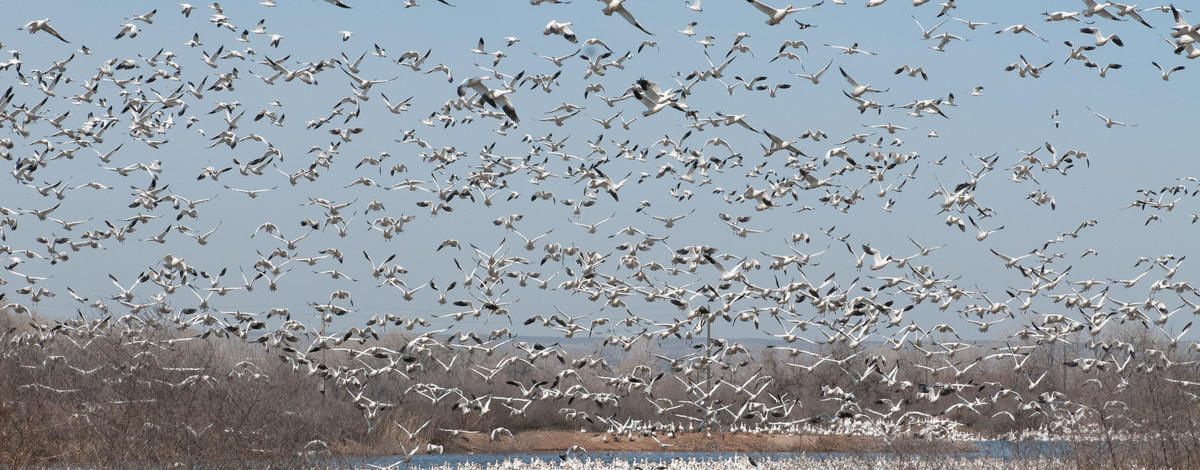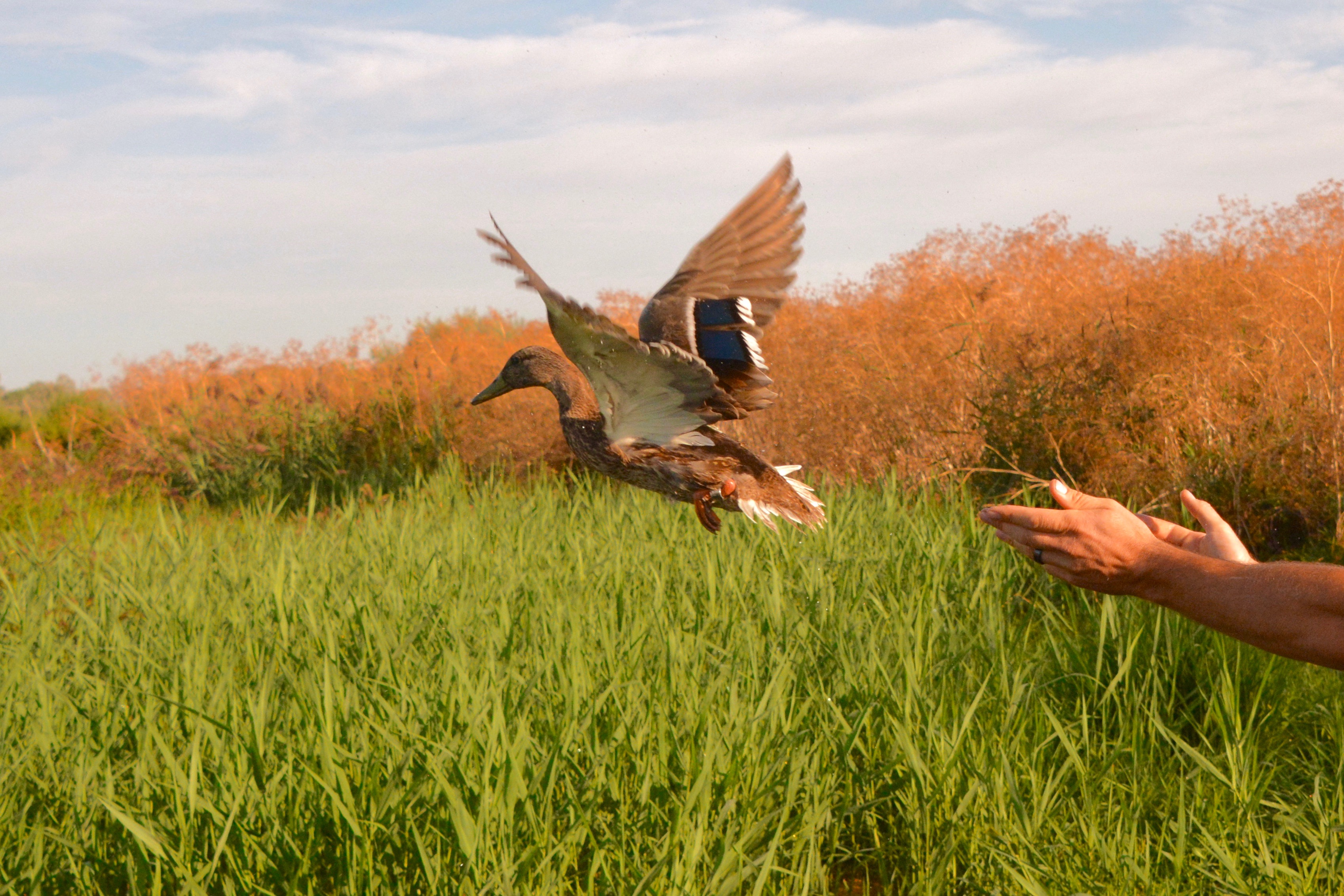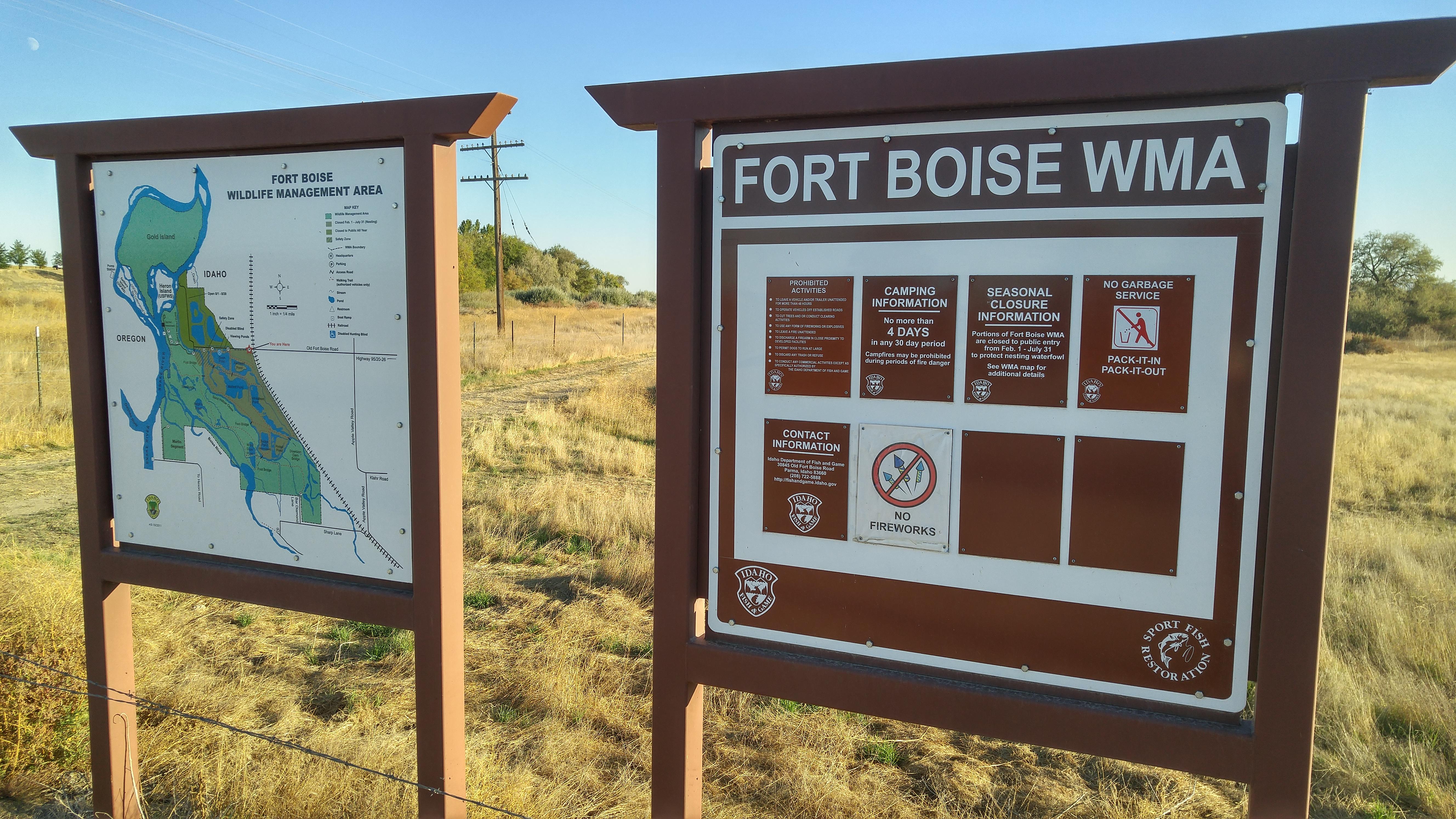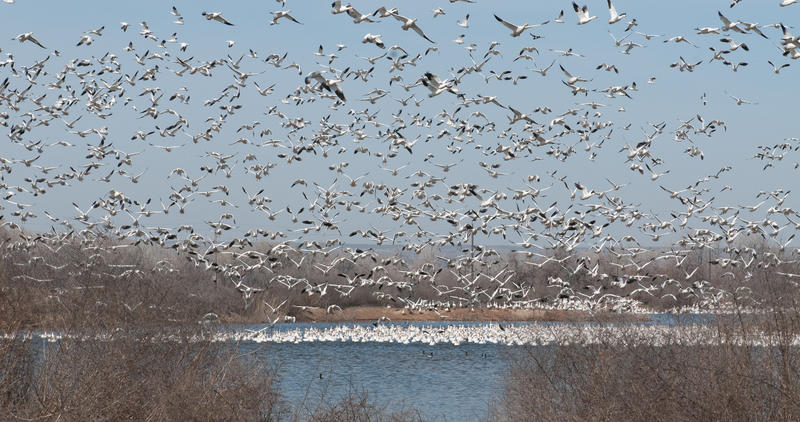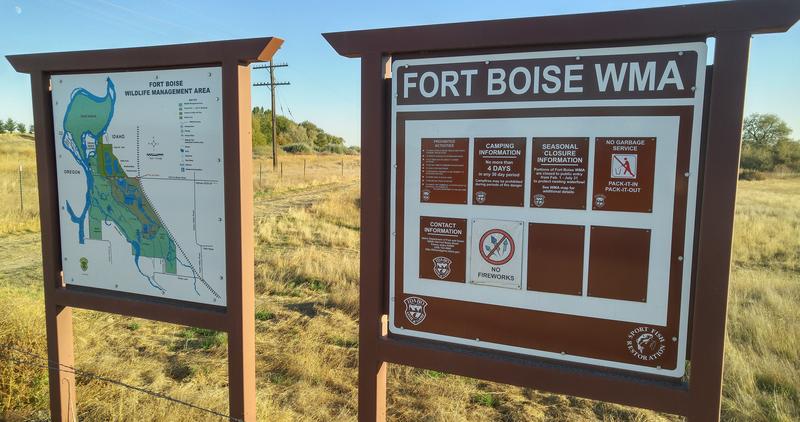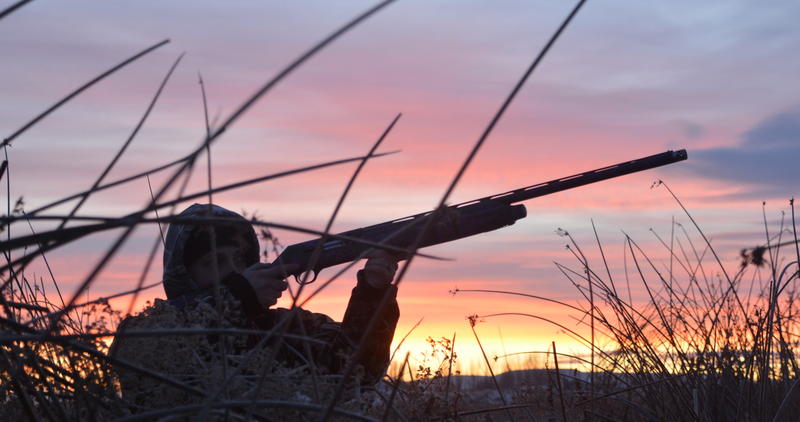Spring skies above Fort Boise WMA are filled with thousands of snow geese as they descend on the ponds below. Shallow water and thick riparian vegetation make Fort Boise and the Roswell Marsh Habitat Area waterfowl havens.
During spring and fall migrations, white-fronted geese, snow geese, widgeon, and pintails visit the area to rest and replenish spent food reserves. Canada geese, mallards, gadwalls, cinnamon teal, and wood ducks commonly nest on WMA lands, while ring-necked pheasant and California quail inhabit the uplands. Other species present include mule and white-tailed deer, turkey, cottontail, mourning doves, and numerous songbirds.
Fort Boise WMA was first established in 1959 when Idaho Power deeded the 330-acre Gold Island to Fish and Game. Later purchases on the mainland allowed the department to create a complex habitat of open water and wetlands for thousands of migrating and nesting waterfowl. This includes the nearby Roswell Marsh Habitat Area with a 135-acre wetlands complex at its center.

